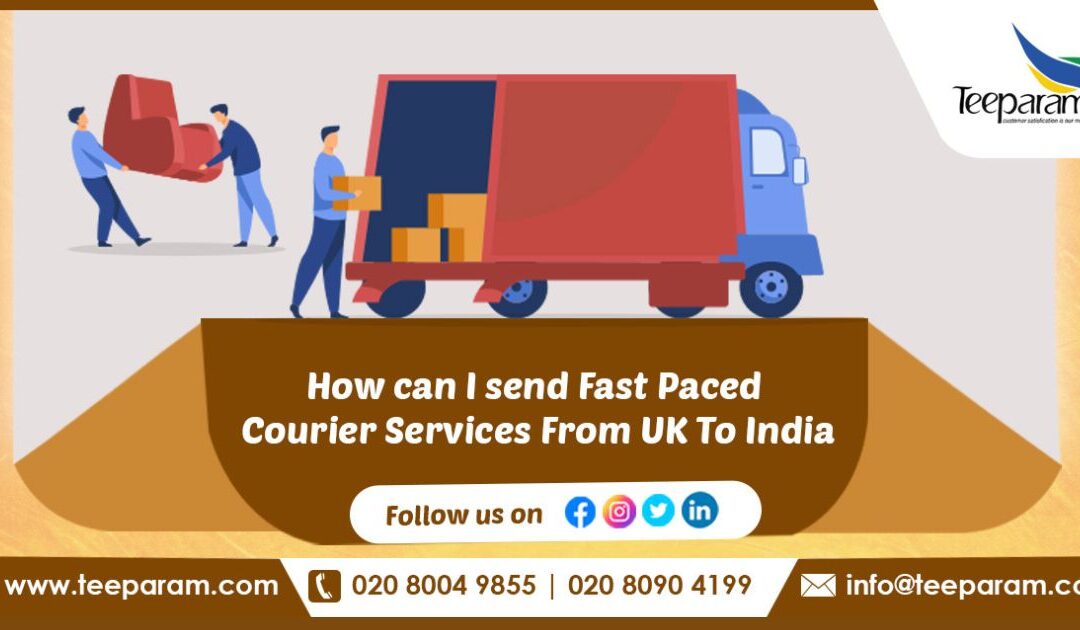
How Can I Send Fast Paced Courier Services From UK To India?
You can send courier from uk to india seamlessly through our top notch international air freight services. The evolution of mankind strongly depends on logistics and the supply chain that supports transferring goods from one place to another. The advancements in technology and innovation at every stage supported transferring goods from one place to another faster and easier compared to the previous practices. In the initial days, the entire import and exports of goods were utterly dependent upon shipping which is the only mode of transportation. This supported shipping goods from one nation to another across the ocean. Later the innovations supported us to send goods through railways and by road as the transportation facility evolved. Today, air cargo supports to send goods across international borders within days which usually took months to deliver goods through shipping
Role of Technology in Logistics
The advancements in technology and the ability of the internet made the service more efficient and simplified the service through online web and mobile applications. These online platforms support sending goods efficiently with ensured security. These platforms also support the users to precisely track the status of the goods and know the exact duration the parcel takes to get delivered. Teeparam is one of the popular parcel delivery services available in the market that offers faster and more efficient service to send parcels from the UK to India. Teeparam’s market-leading professionals securely will deliver your parcel to the doorstep at the right time.
The logistics and cargo services were chosen from the most proficient and elite service providers to deliver your goods on time with ensured security. This supports Teeparam in sending goods across nooks and corners of the globe instantly. Teeaparm’s prolonged services expertise in sending goods from the UK to India supports delivering your goods at a very efficient cost compared to other parcel delivery service providers available in the market. Also, the platform offers additional benefits and discounts to send parcels from the UK to India. Experience the efficiency of Teeparam by sending parcels to India with utmost security. Before sending parcels go through teh upcoming essentials details in this blog that supports you in sending parcels across international borders
Fastest modes to send parcels from the UK to India
✅ Air cargo:
This is the fastest way to send a parcel from the UK to India. It involves sending the parcel by plane, which means it can be delivered in just a few days.
✅ International courier services:
Companies like DHL, FedEx, and UPS offer fast international courier services that can deliver a parcel from the UK to India in a few days.
✅ EMS (Express Mail Service):
This is a service offered by the postal service in both the UK and India. It is generally faster than regular mail and can be a good option for sending smaller parcels.
How to send a parcel from the UK to India?
📌 Choose a shipping method:
There are several options for sending a parcel from the UK to India, including air cargo, international courier services, and EMS (Express Mail Service). Each option has its own advantages and disadvantages in terms of cost, speed, and reliability. Consider your budget and the specific needs of your parcel (e.g. size, weight, contents) to choose the best shipping method.
📌 Package the parcel:
Proper packaging is important to ensure that your parcel arrives at its destination in good condition. Use a sturdy box that is slightly larger than the items you are sending, and fill any empty space with padding (e.g. bubble wrap or packing peanuts). Seal the box with strong tape, and make sure to remove any old labels or markings.
📌 Measure the weight and dimensions of the parcel:
You will need to know the weight and dimensions of your parcel in order to determine the cost of shipping and to ensure that it meets any size and weight restrictions of the shipping method you have chosen.
📌 Calculate the cost of shipping:
The cost to send courier from UK to India will depend on the size and weight of the parcel, as well as the shipping method you have chosen. Use an online shipping calculator or contact the shipping company directly to get an estimate of the cost.
📌 Prepare the necessary documents:
Depending on the contents of your parcel and the shipping method you have chosen, you may need to prepare certain documents in order to send your parcel. These might include a commercial invoice, a packing list, or a certificate of origin.
📌 Take the parcel to a shipping facility:
Once you have packaged and prepared your parcel, you will need to take it to a shipping facility in order to send it. This could be a post office, a courier company office, or an airport (for air cargo shipments). Make sure to bring all the necessary documents with you.
📌 Pay for shipping and get a receipt:
At the shipping facility, you will need to pay for the cost of shipping your parcel. Make sure to get a receipt, as it will include important information about your shipment (e.g. tracking number, and expected delivery date).
📌 Track your parcel:
Most shipping methods offer tracking, which allows you to follow the progress of your parcel as it makes its way to its destination. Use the tracking number provided on your receipt to track the progress of your parcel online.
📌 Consider purchasing insurance:
Depending on the value of the items you are sending and the shipping method you have chosen, you may want to consider purchasing insurance to protect your parcel in case of loss or damage.
What are the required documents to send parcels from the UK to India?
✅ Commercial invoice:
For customs reasons, this is a document that lists the contents of the package. It could be necessary when sending things with a high value or for business purposes.
✅ Packing List
For customs purposes, this document lists the contents of the package. For products having a high value or those subject to particular laws, it can be necessary.
✅ Certification of Origin
Authentication of the country of manufacture or production is provided by this certificate of origin. For things being transported internationally, it might be necessary.
✅ Proforma Invoice
This is a customs-related document that estimates the cost of the goods in the package. It could be necessary when sending things with a high value or for business purposes.
✅ Export Declaration
Some nations demand this form for goods being sent overseas. It is known as the shipper’s export declaration. It serves as a customs declaration and lists the contents of the package.
Engage with Teeparam and experience the market-leading delivery services to send courier from uk to india with the market’s cheapest delivery charges. we will be sharing more valuable insights to send parcels across international borders in every blog. Stay in touch with our reliable delivery services that support you in sending parcels with utmost efficiency and security.


